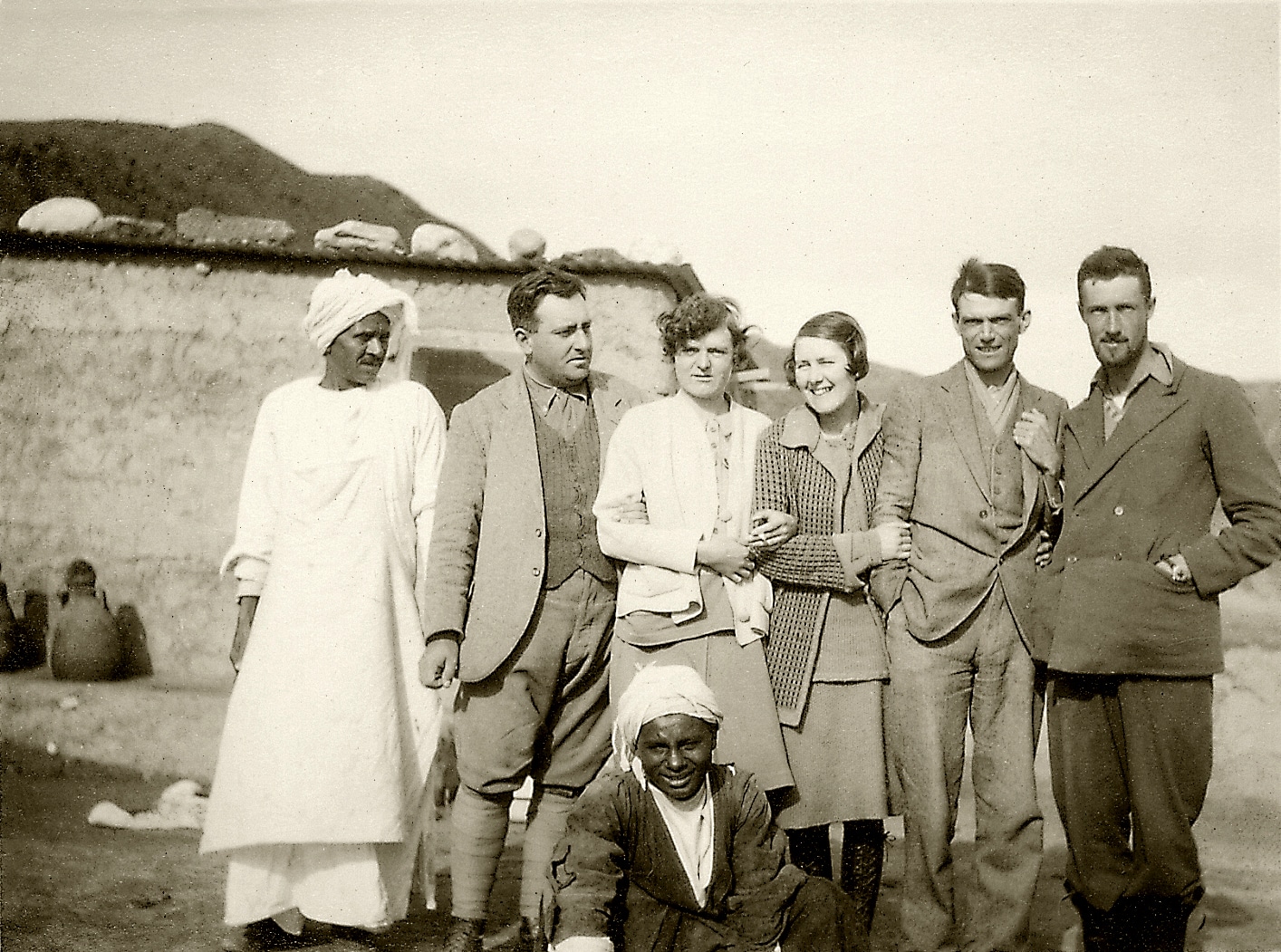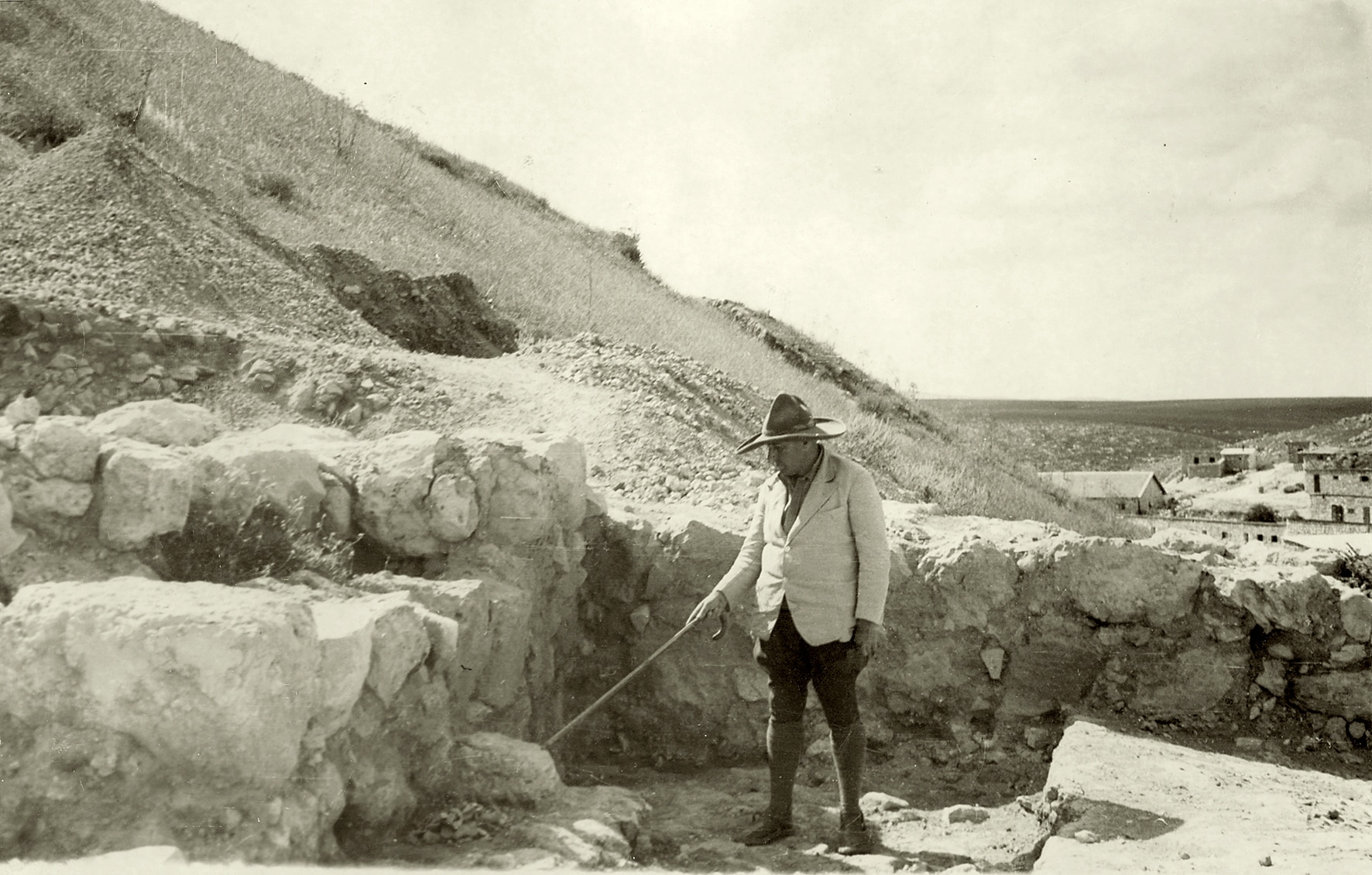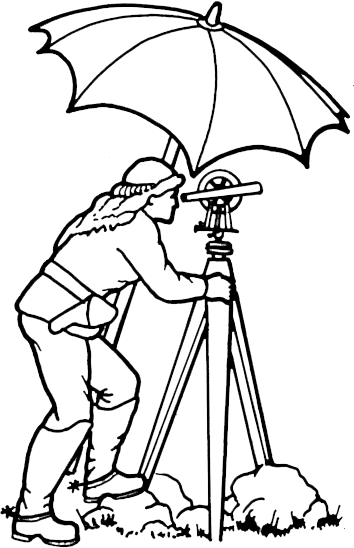James Leslie Starkey, F.S.A., 1895-1938
J.L. Starkey was born in London, the son of a surveyor. He left school somewhere between the ages of 12 and 15, as was common at the time for boys from ordinary backgrounds. On leaving school he worked as an assistant in an antique and jeweller’s shop, which he also lived above. His interest in antiquity was further fostered by books, particularly Layard’s Nineveh and Its Remains, and he spent his spare time reading and visiting London galleries, including the British Museum. During World War I, he served in the Royal Navy Air Force (earning a campaign medal). At one time he was posted to a lighthouse for some months on coastal reconnaissance, where he continued to read books on archaeology that were sent to him.
After the war he attended evening classes in Egyptology at University College, London, where he came in contact with Flinders Petrie and Margaret Murray, studying Egyptian hieroglyphs with the latter. In 1923 he committed himself to an archaeological career, working with Petrie and Brunton at Qau in Upper Egypt for the British School of Archaeology in Egypt (BSAE). His meticulous powers of observation helped to establish recognition of the very early Badarian era. He also brought to light one of the earliest papyrus copies of St. John’s Gospel, consisting of 43 pages of text. In 1924 he was appointed Field Director of the Michigan University Expedition to Kom Washim in the Fayum, and in t1925 he married Marjorie (Madge) Rice, who accompanied him on most of his future expeditions, together with their three children, John, Mary and Jane.
When the BSAE transferred their work to Palestine in 1926, Starkey rejoined Petrie as his first assistant at Tell Jemmeh, near Gaza, applying his experience with workmen in Egypt to the newly-engaged and untrained Bedouin. At Tell el Far‘ah (South), Starkey was in charge for the final season. He also assisted Petrie at Tell el-‘Ajjul.

In 1932 Starkey left Petrie to lead his own expedition, briefly in conjunction with Harris Dunscombe Colt Jr., and financed by Sir Henry Wellcome, Sir Charles Marston and Sir Robert Mond (forming the Wellcome-Marston Research Expedition to the Near East). The chosen site was Tell ed-Duweir, identified as Biblical Lachish, an important city of the Kingdom of Judah.

Findings at this site furthered great interest in Biblical archaeology at the time (although it was not Starkey’s primary interest). Major findings included the Fosse Temple of the Late Bronze Age, the ‘great shaft’, outer revetment wall, city gates, and residencies from the Judaean Kingdom period, and the ‘Solar Shrine’ of the Persian to Hellenistic periods. Due to his painstaking methods, the discovery of the ‘Lachish Letters’ – a series of ostraca with Hebrew script written shortly before the Babylonian conquest of 586/7 BC – amply fulfilled the expectations of his supporters.

In January 1938, at the age of 43, Starkey’s career was tragically cut short. His good relations with the workmen and people from the surrounding villages were well known, so it came as a great shock when he was murdered by a group of Arab militants en route to the opening of the new Palestine Archaeological Museum in Jerusalem. He was buried on the 11th January 1938 in the Protestant cemetery on Mount Zion, Jerusalem, his funeral attended by hundreds of mourners. His close friend and colleague, Gerald Lankester Harding, gave tribute to Starkey’s outstanding contribution to Palestinian archaeology and his personal qualities through the Palestine Broadcasting Service the same evening, stating that his loss was irreparable, not only to his staff, but also to science. In the same year Starkey had been a member of the Executive Committee of the Palestine Exploration Fund and a Fellow of the Society of Antiquaries. In the following February another member of the expedition, Olga Tufnell, wrote an appreciation of his life for the Palestine Exploration Quarterly (no. 70, April 1938). Fifty years later a memorial service for him was held in Jerusalem attended by his son John and grandsons: but his lasting testament lies in the four volumes of the Lachish Excavation Reports, and in the camp chorus which everyone sang on the dig:
“Not for the greed of gold
Nor for the hope of fame
Not for a lasting heritage
Nor for a far-flung name
Rather for making history
And for some lore of old
This is our aim and object
Not for the greed of gold”

Compiled by Ros Henry, 2008 updated by Wendy Slalinka, 2021

